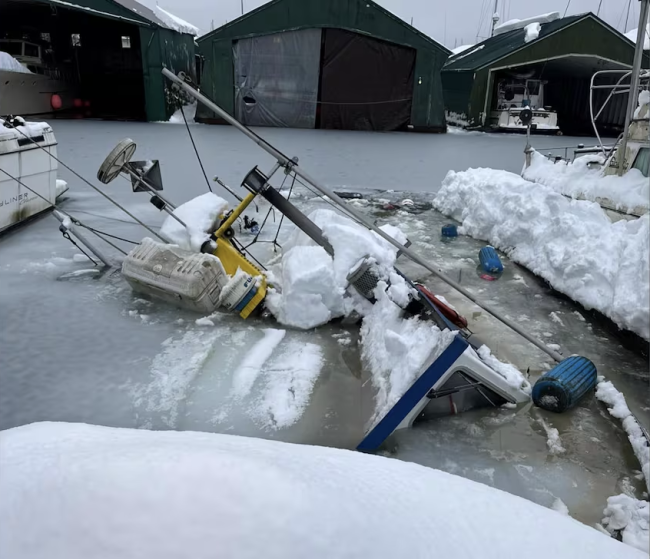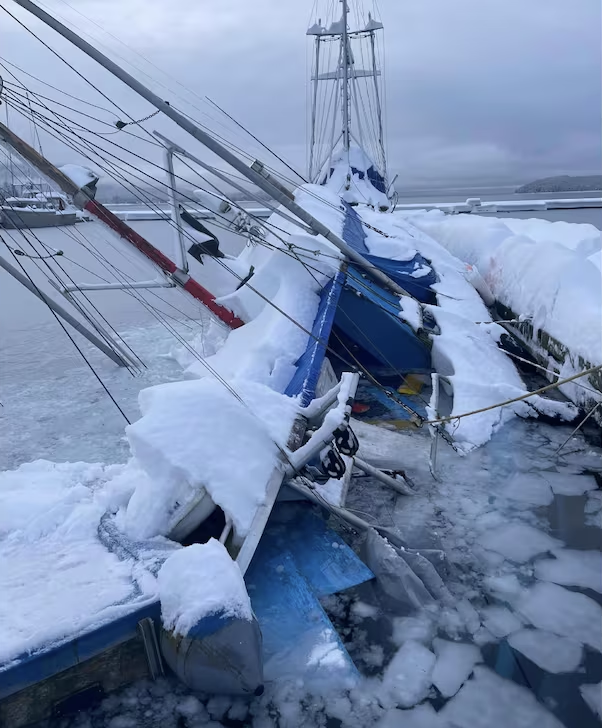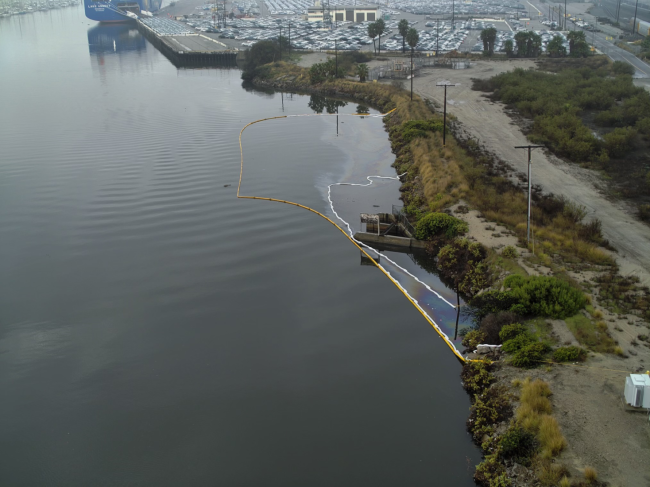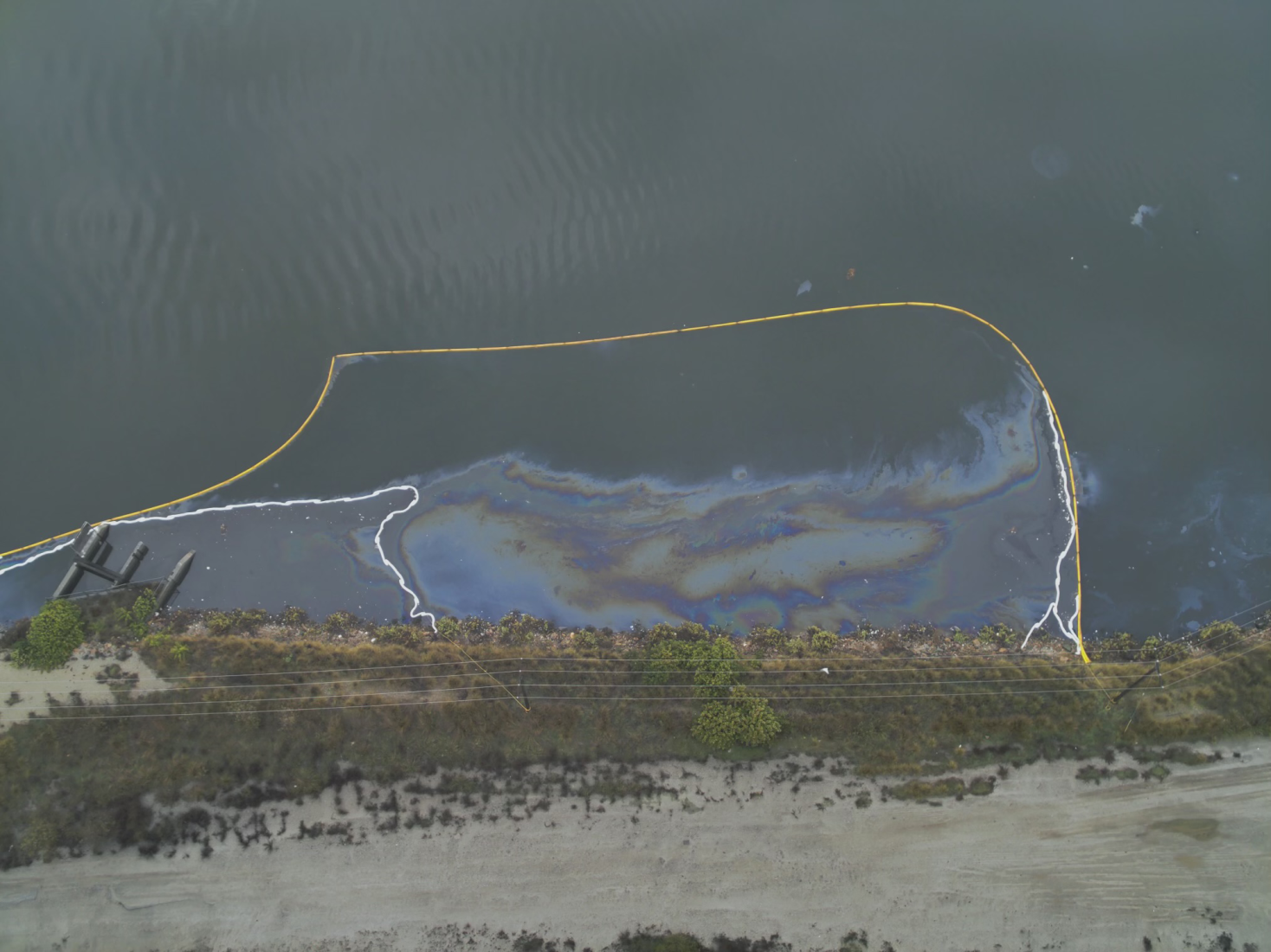Every month, NOAA’s Office of Response and Restoration (OR&R)’s Emergency Response Division provides scientific expertise and services to the U.S. Coast Guard (USCG), ranging from producing oil spill trajectories that estimate where a spill may spread; to identifying possible effects on wildlife and fisheries; to estimating how long oil may stay in the environment. We also receive requests to track and model other floating objects, such as log booms or shipping containers that have broken free, whale carcasses, fish die-offs, and algal blooms.
During January, OR&R provided response support for 25 incidents, including 16 new incidents in six different states and a transboundary incident with Canada. The 16 new incidents included 10 actual or potential oil spills, five chemical incidents, and one “other”—a dead gray whale. OR&R staff prepared 108 incident reports and documents, including two fate and trajectory analyses. Cumulatively, these incidents posed an approximate risk of more than 432,285 gallons of oil and chemicals.
(Note: All spill volumes are approximate and based on initial information that may be updated after further investigation.)
Heavy Snow Loads Sinking Vessels; Juneau, AK
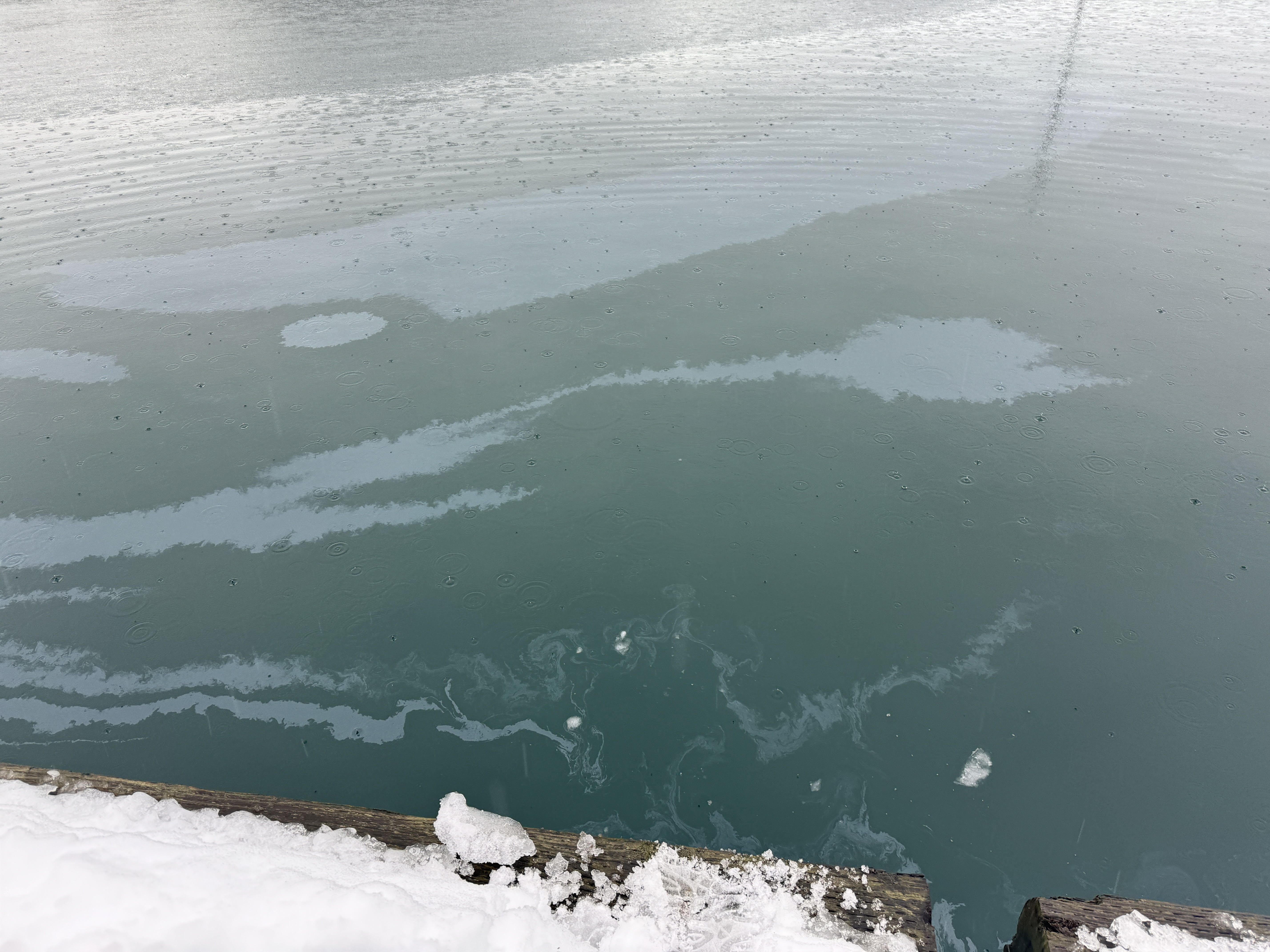
On January 24, USCG Sector Southeast Alaska reported that they were responding to eight sunken vessels in or near Juneau, Alaska. The vessels were in Harris and Aurora Harbors near downtown Juneau and Statter Harbor in Auke Bay. The vessel sinkings were attributed to heavy snow loads due to Juneau receiving over 28 inches of snow since January 21. A ninth vessel sank the following day.
The sector requested assistance from the NOAA scientific support coordinator (SSC) to initiate an emergency Endangered Species Act (ESA) consultation with the National Marine Fisheries Service and the U.S. Fish & Wildlife Service. Steller sea lions were observed near the specified harbors and humpback whales may occur in the vicinity.
By January 29, eight of nine sunken vessels had been refloated and defueled. The refloating of the final vessel was delayed by high winds, but was recovered on January 30. The vessel of highest concern was one that sank to a depth of over 100 feet in Statter Harbor and had over 200 gallons of gasoline on board, which was recovered before it could discharge into the environment.
Juneau had a record snowfall of 76.8 inches for the month of January. The heavy snowfall disrupted travel, caused several avalanches, and collapsed at least one roof, in addition to the vessel sinkings.
Fire at Ilwaco Landing on Columbia River; Ilwaco, WA
On January 22, the USCG at Astoria, Oregon contacted the NOAA SSC about a fire that broke out at the Ilwaco Landing seafood processing facility. The landing serves as a hub for Dungeness crab harvests on the Columbia River in Washington State. On the site were: an approximately 1,700-pound tank of freon, two 15-gallon tanks of propane, and a 50-gallon drum of hydraulic oil. An explosion had been heard earlier; the fire was reported to be overtaking cars on the pier; and there were no reports of vessel impact.
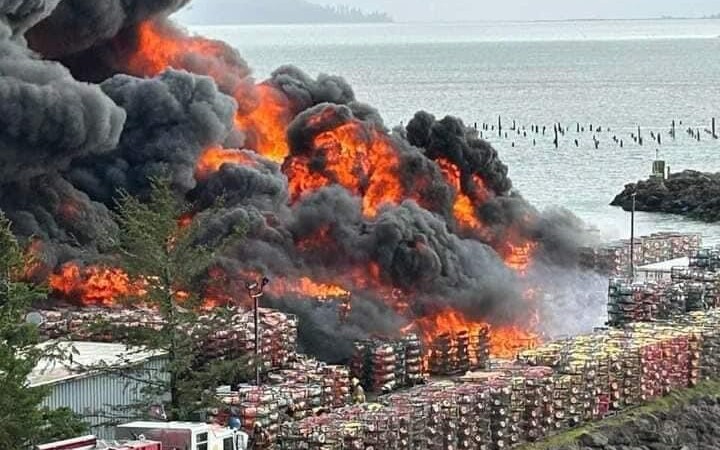
At the request of the USCG, NOAA produced a National Weather Service Spot forecast and air dispersion modeling. The NOAA HYSPLIT (Hybrid Single-Particle Lagrangian Integrated Trajectory) air transport and dispersion model was used to simulate the direction of smoke movement.
Fire crews from Ilwaco and neighboring communities reported on-scene. By noon, flames were no longer visible, but the entire port area was blanketed in smoke. Crews continued working into the evening to confine the blaze to the dock and the processing plant.
The fire destroyed thousands of the approximately 8,500 crab traps that were staged for the delayed start of the Dungeness crab season on February 1. The cause of the fire is being investigated.
Stormwater Outfall Oil Discharge; Dominguez Channel, Long Beach, CA
On January 21, the USCG contacted the NOAA SSC for California regarding an inland spill of roughly 1,200 gallons of crude oil/water mixture, which was sprayed onto E. Anaheim Street in Wilmington, CA. The spill resulted in oil entering a stormwater drain which discharged to the mouth of Dominguez Channel in the innermost portions of the Port of Long Beach.
The USCG investigated the harbor and located a 1,500-foot by 50-foot area of sheen with globs of crude oil. Containment boom was deployed and appeared to be effectively containing the sheen. As a precaution, however, the USCG requested from OR&R a hypothetical trajectory in the event of a complete boom failure. Their particular concern was possible threats to the Cabrillo Wetlands, located about four miles down-channel. The SSC reported to the Coast Guard that a number of conditions, taken together, indicated that oil or sheens were not expected to extend beyond the mouth of Dominguez Channel.
At the time of publishing, an oil spill response organization is on-scene conducting cleanup and recovery efforts. Investigation into the cause of the incident, the volume released, and volume recovered is ongoing.
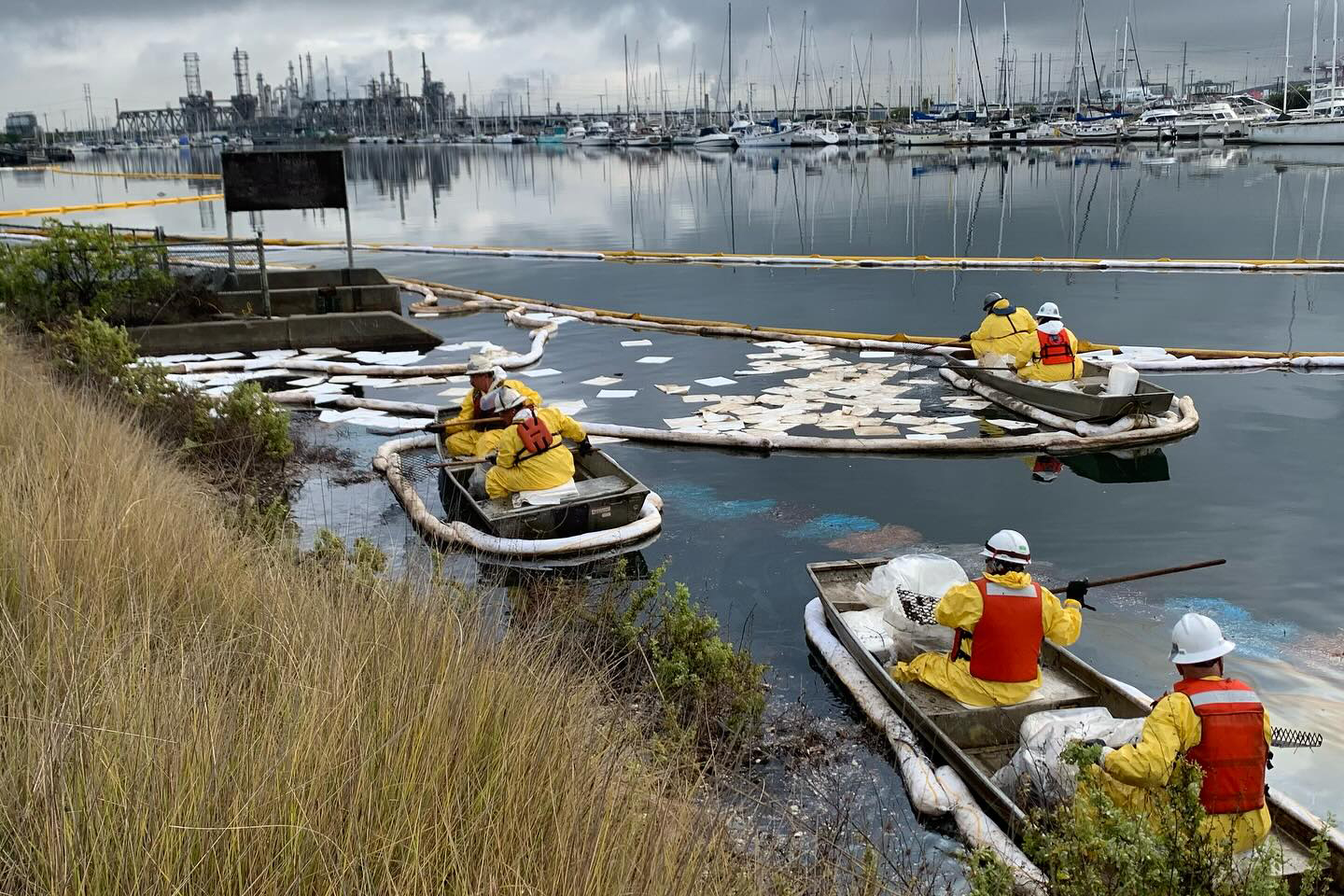
Widespread Unknown Odor; area of Corpus Christi, TX
On January 3, emergency management offices in seven counties in the area of Corpus Christi, Texas, began receiving reports of an unknown odor. The odor was described various ways, as sulfur- or ammonia-like. No source could initially be identified.
The National Weather Service office in Corpus Christi received a request for an air plume reverse trajectory (hindcast) to assist in locating the source. Based on the initial reverse trajectory and a review of National Response Center reports, no point source was identified. Air monitoring crews from the Texas Commission on Environmental Quality and multiple local agencies reported in the field, and an EPA ASPECT (Airborne Spectral Photometric Environmental Collection Technology) aircraft began collecting data. The NOAA SSC supported the response remotely, providing insight as to how to best use the reverse trajectories and additional data to pinpoint the source. The graphic below shows the results from hindcast modeling, which ran multiple reverse trajectories to see where they converge, cross-referenced with the ASPECT data.
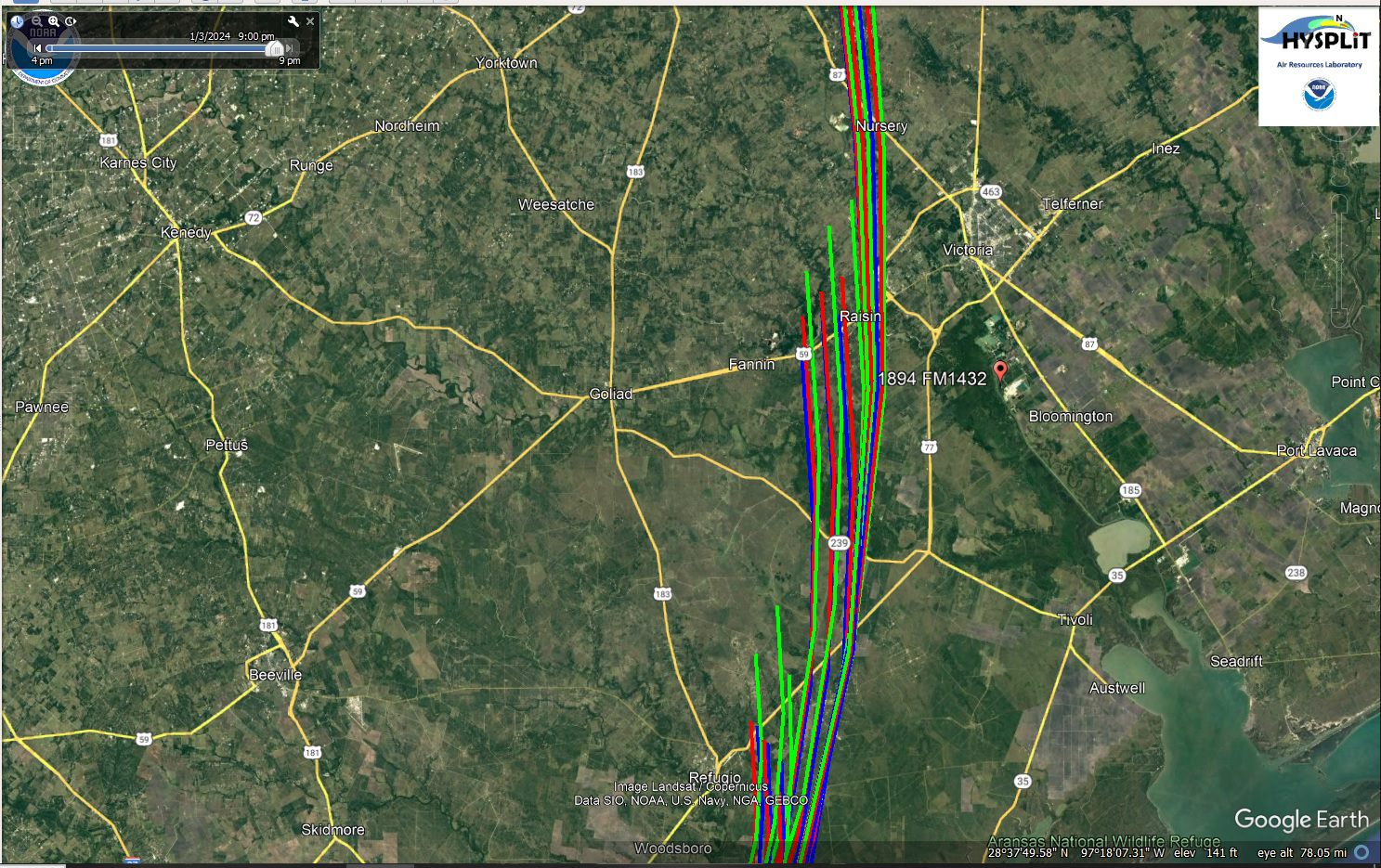
The source of the odor was eventually identified as a discharge at a tank farm located in the Port of Victoria. Approximately 300-800 barrels of crude oil and diesel mixture with elevated sulfur content were discharged into a containment area on January 3.
None of the released product entered the Victoria Barge Canal and tests did not show actionable levels of hydrogen sulfide. The Texas Commission on Environmental Quality is overseeing the response.
Here is the complete list of January’s incidents. Click on the links to find out more:
- Barge Investigated for Oily Discharge, MM 11.5 Tennessee River; Calvert City, KY
- Tanker Truck Lube Oil Release; Port Hueneme, CA
- Gray whale carcass; Solana Beach, CA
- Naptha Discharge, San Jacinto River, Channelview, TX
- Sulfuric Acid Drum, Corpus Christi Inner Harbor; Corpus Christi, TX
- Coke Liquor Spill from a Steel Facility; Sault Ste. Marie, ON, Canada
- Heavy Snow Loads Sinking Vessels; Juneau, AK
- TPIC Sweet Lake Discharge; Cameron, LA
- Fire at Ilwaco Landing on Columbia River; Ilwaco, WA
- Propylene Glycol Spill; Port Orchard, WA
- Stormwater Outfall Oil Discharge; Dominguez Channel, Long Beach, CA
- Naptha Discharge; Houston Ship Channel, TX
- M/V Oz Aground, Spieden Island, San Juan Islands, WA
- Pipeline Discharge; North Slope, AK
- Mystery Sheen; vicinity of Coquille Bay, LA
- Widespread Unknown Odor; area of Corpus Christi, TX

